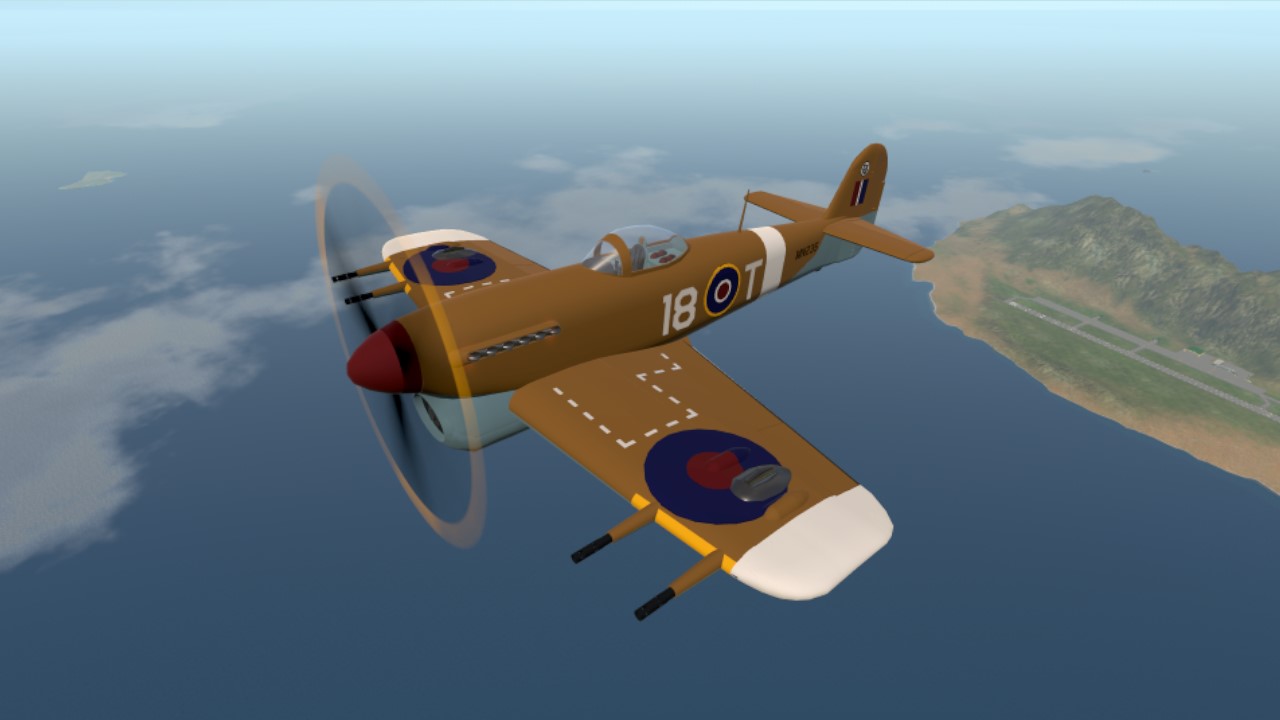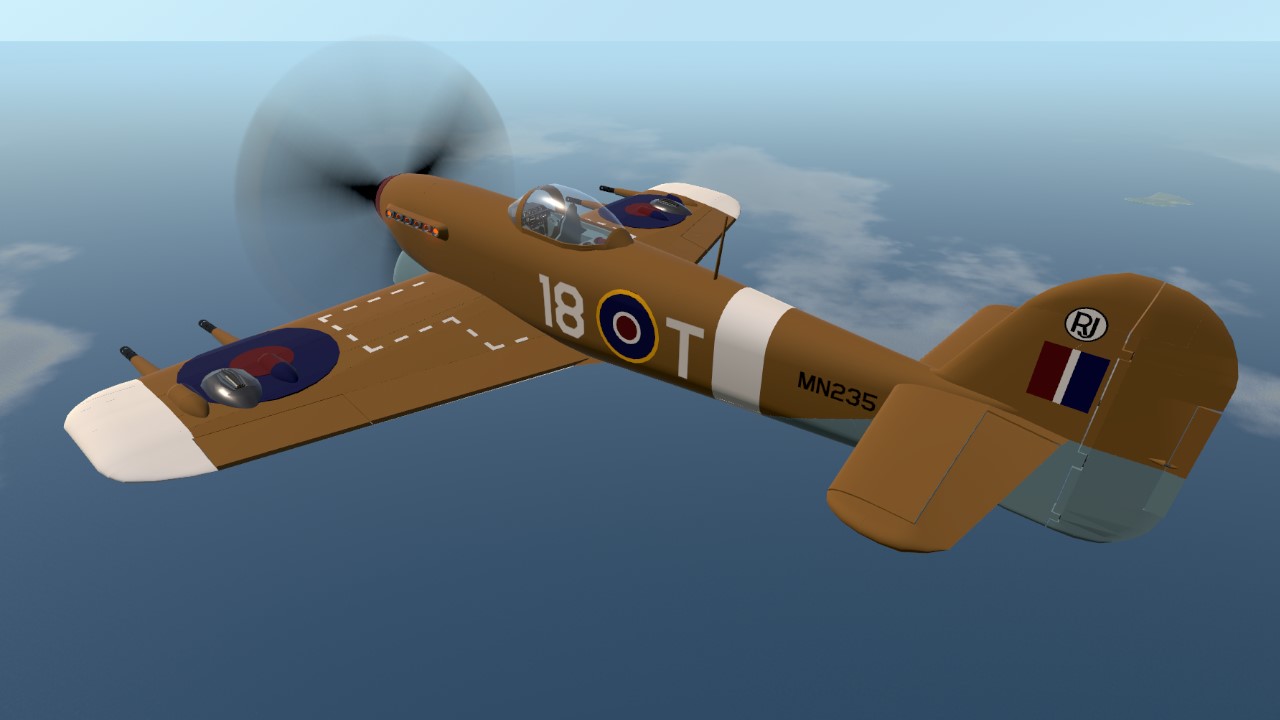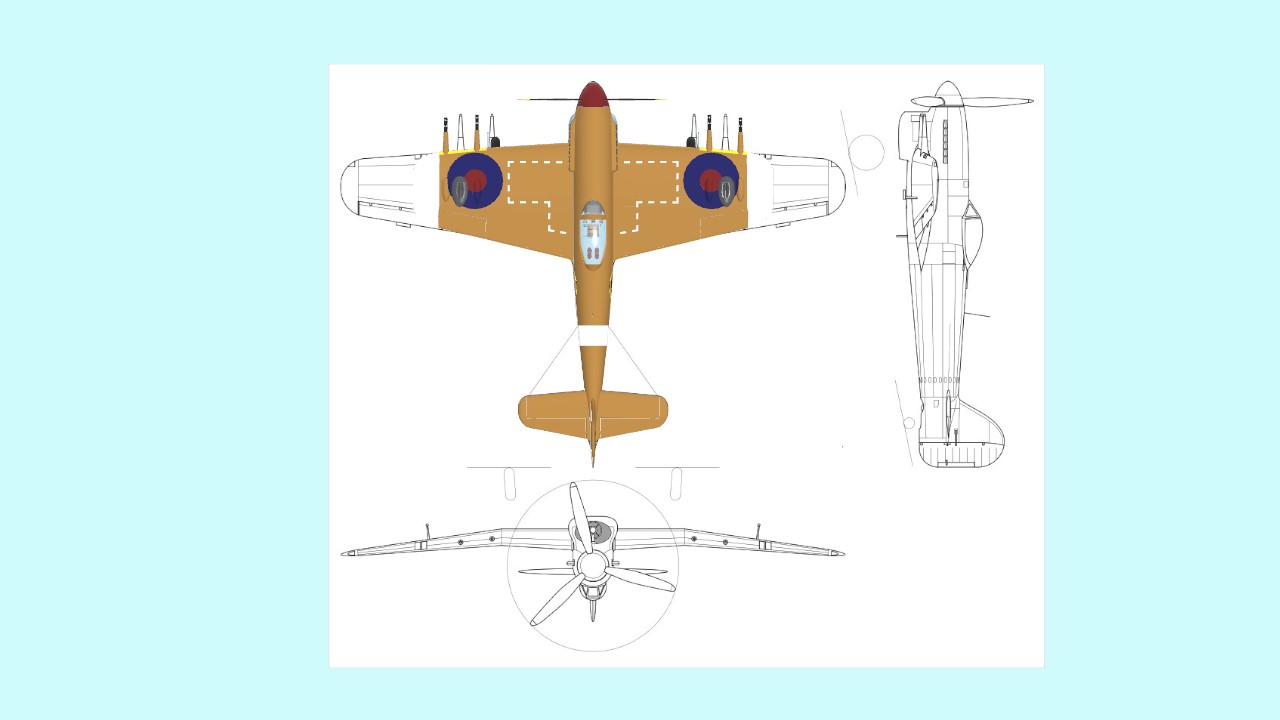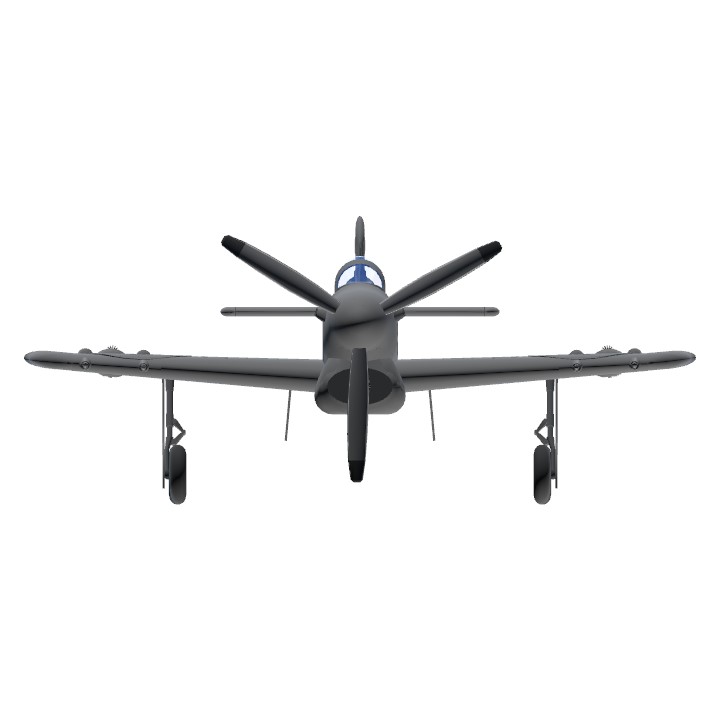Introduction
Well im finally finishing some of my abandoned builds. Following on from my Small-Brown-Dog themed FW300 builds I thought it would be fun to consider what impact these "anti-grav" units would / could have had on actual aircraft of the era so I chose to base this build on the Hawker Typhoon. The "anti-grav" units reduce the requirement for lifting wing sections thus enabing a smaller wing to be fitted to the aircraft, as the units are still in their infancy they dont provide 100% of the lift though.

The "anti-grav" units need to power up and due to their need for air cooling the wont kick in until the aircraft reaches approximately 90mph, this does have a noticable effect that kicks the aircraft off the ground briefly (not very high either) before resuming the takeoff run, the same effect happens in reverse on landing but with more spectacular results - if you are not on the ground when 90mph is reached it will drop like a stone.

Armed with 4 no. 20mm cannon it can stand its own at interdiction missions or anti-aircraft roles. The shorter wing leads to a decent role rate (it would have been faster if the "anti-grav" units were closer inboard but due to the undercarriage etc this was not deemed feasible. Pitch is also assisted by the "anti-grav" units as they add thrust infront of the CofG, all in all it handles better than comparable aircraft of the era (plus with the Napier Sabre engine its quite quick as well - also assisted by less wing / drag). However for all its armament it is still subject to damage as per the real thing.

Controls
AG1 = start the engine
AG2 = close/open canopy
VTOL dn = flaps
Pictures
When preparing to ditch in the sea after a failed anti-shipping mission dont forget to press AG2 to open the cockpit for a quick egress


Smart on the ground


Ground photoshoot with FW300




Ground attack practise



Screenshot of front view from 3 view for prop size / scale

Links
Specifications
General Characteristics
- Successors 1 airplane(s) +28 bonus
- Created On Windows
- Wingspan 29.4ft (8.9m)
- Length 31.4ft (9.6m)
- Height 12.6ft (3.8m)
- Empty Weight 9,540lbs (4,327kg)
- Loaded Weight 12,053lbs (5,467kg)
Performance
- Power/Weight Ratio 0.838
- Horse Power/Weight Ratio 0.165
- Wing Loading 17.5lbs/ft2 (85.5kg/m2)
- Wing Area 688.3ft2 (63.9m2)
- Drag Points 1049
Parts
- Number of Parts 980
- Control Surfaces 0
- Performance Cost 3,038







@RamboJutter Mine was 1.12.128.0.
@RamboJutter Which version are you using again?
@ThomasRoderick nope don't have that button...
@RamboJutter
.
..
... you know where the variable setter is, right? Here are two screenshots on what it's supposed to look like.
@ThomasRoderick I dont think you need to worry about me stealing your code, i cant even find it... =) All it says in the input for the vtol unit is AGRV so i cant even work out how to edit the variables. This is why i avoid complicated funkycrap and stick with what i know. Thanks anyway.
The Pog of planes
@RamboJutter My personal revised model, here. The prop coding was all mine, but feel free to include them in your future creations as long as credit is given. Everything else is just common knowledge.
@RamboJutter Found out the hard way that setting the anti-gravs at 90mph was the hard limit on a full-throttle takeoff - if they kick in before that it would end up with the plane slamming back into the ground... and somehow when that plane is at 50% throttle the antigravs can be set to activate at 60mph and the planes gently kicks off the ground.
@RamboJutter Tried to mimic the effect of a constant-speed prop... and promptly realized that somehow pushing the engine anywhere beyond 75% before reaching 60mph would cause an automatic propstrike now.
@RamboJutter Yeah, V felt pretty buggy as of now... I'm testing with a revised code using IAS, and the results are pretty promising.
@ThomasRoderick I tried the amended code and it still doesnt appear to work. I use a VTOL engine for the uplift mechanism, i input this code and rather than kick in after X amount of speed it just stays off.
@ThomasRoderick its the old way of identifying velocity / speed, i use it as; a) i used it before funky trees so im used to it, b) its simple and c) i dont know what else to do =)
@RamboJutter Also, what, exactly, is "V"? I didn't see anything resembling that in the variable setter. And when I tried to use it as-is, the game said I need to define "V" first.
@RamboJutter Just checked the code, forgot to capitalize the "t" in "Throttle". Fixed now.
@ThomasRoderick Unfortunately that command doesnt work, nothing happens at all.
@RamboJutter
So basically, given Bogdan and you were talking about having the antigravs/repulsors/techno-babble-lifting-engines kicking in at lower speeds on takeoff and shutting down at higher speeds on landing, what I said is basically to revise the coding to use different inputs under different conditions: when the throttle is wide open, the wing stuff (I still refuse to call it antigrav) kicks in at over 60mph, while when the throttle is lower than a select setting, the antigrav would only kick in at 90mph.
TL;DR: what I tried (and utterly failed) to convey is... does the function
work?
@ThomasRoderick thanks for the reply, I have taken a few days to mull it over. It all boils down to what anti grav actually is. In its basic form I would imagine it is a system that increases the opposing force put upon an object by the force of gravity when an object is stationary. In this case it reduces the force of gravity somewhere in the region of 50-75% Now this is solely for static purposes. When an aircraft is moving the anti gravity device would have a hard time deciphering which force acting upon it is from gravity or centrifugal / centripetal or similar, thus the device when acting in a vehicle in motion acts to reduce the applied force but for simplicity it's called anti gravity.
As for your second message, my head hurts, no idea what that means / does.
@RamboJutter
essentially its a compromise
So apparently "if throttle >
SetValuethen (bool V > 60) else (bool V > 90)" isn't the way to go?Beautiful as ever my pal! Although... pray tell me, why isn't something called "anti-grav" always pointing against the direction of gravity again?
.
..
... Yeah, I know, that lil' brown pupper probably meant "something that functions like wings/thrusters but different", but seriously, whenever people say "antigravity" in sci-fi it functions like a thruster - and things that actually goes against gravity are usually not called as such: in Star Wars it's called "repulsorlift", in Mass Effect it's "mass effect field" and "element zero", in Star Trek it's "inertial dampeners", and in Star Blazers it's "gravity anchor"... and yet somehow the massive honkin' rocket engines that lifted an entire city in Age of Ultron was called "anti-grav".
.
..
... I myself would imagine a "true" anti-gravity vehicle to function like a flying submarine or an oddly sleek dirigible - with all the advantages and challenges that entails. They would probably be better at S/VTOL flight than a conventional craft, but would probably be worse at cross-wind landing assuming no other traditional lifting engines/fans/nozzles are present. Trim and ballast becomes crucial for attitude and altitude control - sometimes even more so than whatever vestigial fins they have, and they would probably have distinctive tendencies to "right" themselves in a certain direction as there's another force at play unless carefully balanced... which sounds rather hard as combat planes tend to carry external stores under their wings and fuselage... while civilian planes tend to cram fuel into every available nook and cranny in their wings and fuselage.
.
..
...
....
.....
...... and sorry for rambling.
@BogdanX Thanks Bogdan, yeah i agree with the wings, i need to build a better WW2 fighter wing - this one felt a bit bodged for the trailing edge especially and as you say I have used it before so its getting a bit old. The prop is scale - believe it or not, the initial Typhoon iib had a 3 bladed prop which they changed to 4 blades later on to reduce diameter (or so i understand) but i based this on a drawing of the iib. Flaps are linked to an airbrake inside which increases drag above the CofG thus adding a bit of pitch up and slowing the aircraft down as well - I agree though that on this build its not as noticable as maybe it should have been. I was struggling with the takeoff speed, as i wanted the vtol units to kick in at 90mph ish for landing i couldnt have it taking off at a lower speed, the pesky vtols dont like being set lower than this as it makes the plane "float" around on the ground and it ends up being impossible to land - essentially its a compromise but again, i could have spend a lot more time trying to tweak this a bit. THanks again for your feedback, nice to hear from you again.